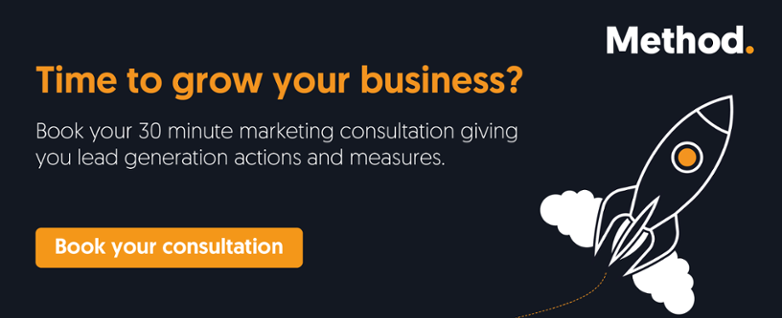One of the first opportunities for customers to become acquainted with your brand is sometimes a ‘discovery call’ which turns a lead into a qualified lead.
Every discussion with prospects should be handled helpfully and empathetically, during which a rapport is established with the potential customer without any sense of pressure. If a discovery call appears to hold potential, the next step is lead qualification. This is the process of establishing whether a lead or prospect is a good fit for a product or service, helping determine whether or not the lead should be pursued.
Qualifying leads effectively is a skilled process, requiring an enquiring mind, effective communication skills and limitless patience. There are some good models which provide useful frameworks for guiding the process of sales qualification helping determine whether a deal is ultimately achievable. Qualifying leads effectively depends upon establishing a fit between the potential customer and the product or service on offer based on key factors specific to what it is you are selling. A misfit between the two will not only create problems for your brand and the customer you are selling to, but potentially also for your overall customer satisfaction in the future.
Working without a framework for effective lead qualification could impact sales and revenue negatively, whereas prioritising leads that have a higher likelihood of becoming customers helps maximise your productivity, helping invest you and your customers valuable time and energy in the right places. Accuracy, understanding and precision are key qualities for successful strategies for lead qualification.
Facilitating a more personable sales conversation, educating your brand's representatives about the buyer's drivers and challenges and creating a range of sales qualification processes, establishing harmony with particular customers are just some of the many benefits of lead qualification. The disadvantages of not incorporating lead qualifications are many, not only may clients be switched off, but the brand's reputation and image can be damaged, sometimes irreparably.
Leads vary in how difficult or easy they are to qualify. The more information available about a lead, the more likely it is to be processed successfully. So how does one distinguish between qualified leads and unqualified prospects?
Here is Method’s need to know guide to lead qualification, definition & techniques
BANT
BANT has become the go-to sales qualification methodology. The BANT technique is based on four questions associated with the purchasing decision:
Budget - Can they afford it?
Authority - Who is making the purchasing decision.
Needs - How important is the product or service to the client and what requirements does it fulfil?
Timeline - Is there an urgency.
The number one option for bespoke, expensive products and services, the BANT framework is a perfect fit for brands which have unique products or services and which are difficult to quantify or qualify. Taking into account various budgets, multiple CEO’s and investors, BANT is a comprehensive checklist which asks all the right questions.
CHAMP
A framework that prioritises client needs, CHAMP is a modern approach to sales lead qualification. Driven by needs or wants, CHAMP methodology is a great option for many sales teams. CHAMP asks the following questions:
Challenges - What are the pain points? What objectives are you looking to achieve by addressing this pain?
Authority - Who is involved in making this solution happen in your company? How are purchasing decisions made for products and who is involved in identifying a solution?
Money - What is the budget allocation process?
Prioritization - What is the most important or order which challenges need to be dealt with.
MEDDIC
The MEDDIC model outlines techniques leading to improved customer qualification. MEDDIC helps organisations forecast potential sales with better accuracy, thereby helping manage leads better. It helps address the following issues:
Metrics - What goals are you hoping to achieve? How would you measure success?
Economic buyer- Who is the person who makes buying decisions?
Decision Criteria - What are the drivers behind making a purchase?
Decision process - What are the thought processes behind making a purchasing decision?
Identifying pain - What are the pain points that need addressing? What has prevented the client from solving these problems in the past?
Champion - Can you appoint a ‘Champion’, an individual who is invested and motivated in achieving success for the brand?
ANUM
The ANUM framework lists the criteria a qualified lead needs to meet, together with a process for a brand's salesperson to follow. ANUM prioritises identifying the authority figure and building a case for need with them. Urgency and money are only considered important after authority and need is identified.
Authority - What is the decision-makers title and role and how do you address their pain points?
Need - What challenges are they struggling with? Why haven't they addressed them before?
Urgency - If you fully comprehend the buyer's needs, then determine how much of a priority it is for these requirements to be fulfilled.
Money - Does the client have a budget allocated to this type of purchase? How much would the client need to spend to solve their current issues?
FAINT
As a sales and lead qualification framework, FAINT can be navigated much like any other sales framework. Considered niche, only a few businesses use the FAINT framework but it creates a higher level of accuracy in qualifying leads for the relevant industry. It is common where purchase decisions are unplanned and there is no set budget. This can then affect sales forecasts positively, which can then be used to optimise sales initiatives. The structure works as follows:
Funds - Do they have the ability to spend?
Authority - are you liaising with the decision-maker?
Interest - Generate interest and win your audience by clearly defining your product or service. This is the real sales pitch!
Need - Recognise the potential pain points of the client. Is there an immediate need to be solved?
Timing - When is a solution required by?
Selecting and implementing the right technique for your brand will help leads evolve to successful sales. Consistently addressing and evaluating pain points, providing solutions, inspiring future repeat sales and aligning values will create more opportunities for moving qualified leads toward conversion.
HubSpot go into more detail on lead qualification here.





